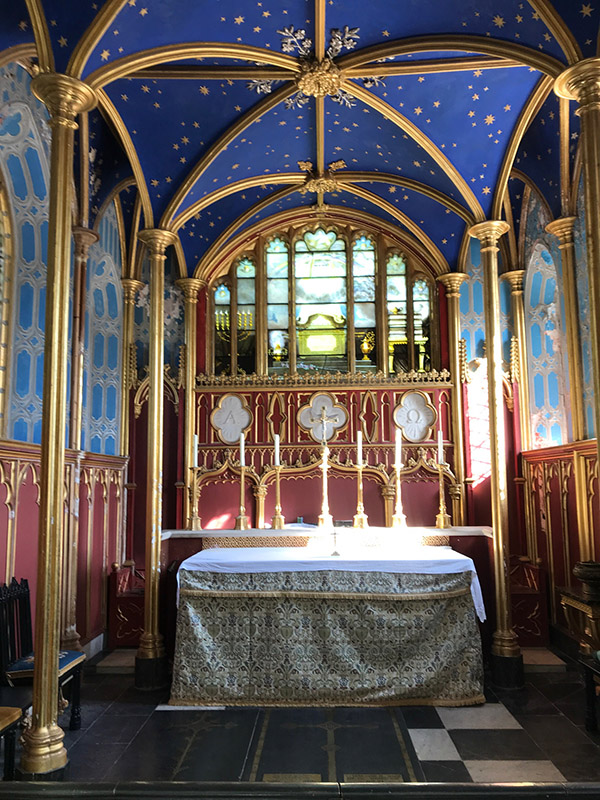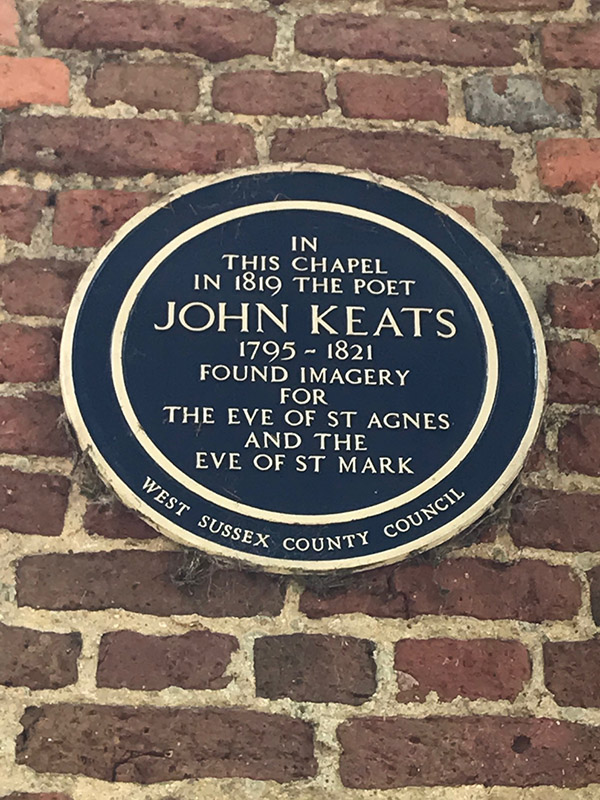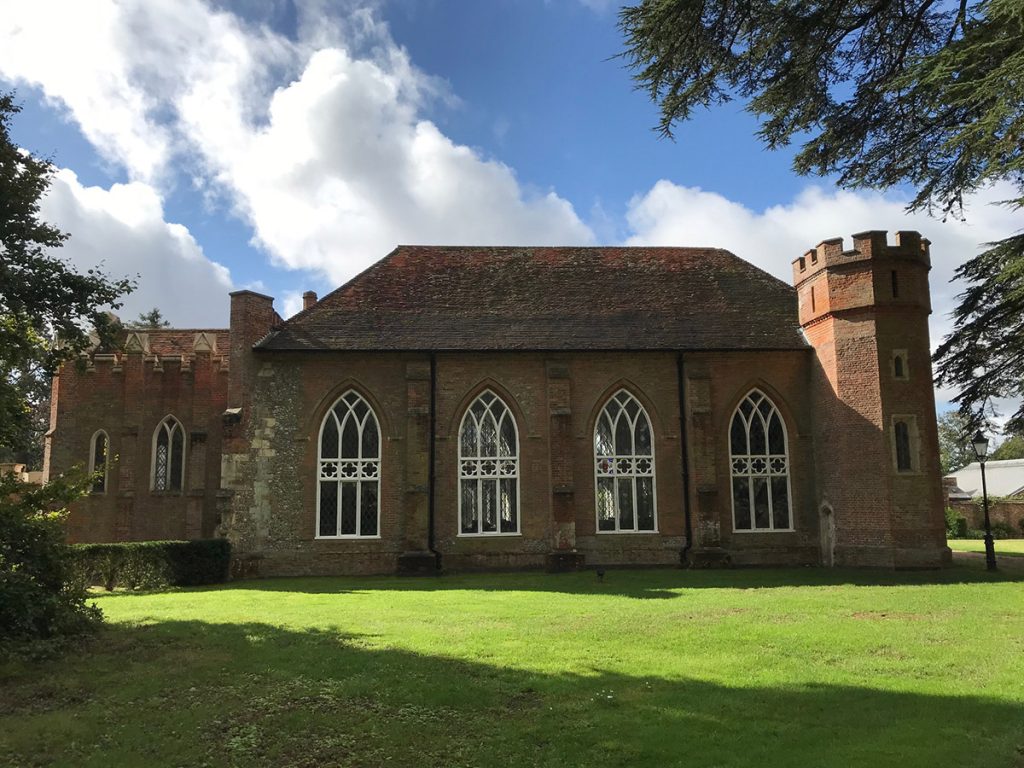John Keats commemorated
Two hundred years ago, John Keats died in Rome on 23rd February. He lived in Hampstead for the last few years of his life and the house where he lodged, Wentworth Place, in what is now known as Keats Grove, is now a museum in his memory. Hampstead Parish Church has a bust of the poet presented by American admirers of his poetry, just by the steps to the Lady Chapel.



John Keats was not an enthusiastic church goer during his life. But as I discovered when working in Hampshire last year, he is associated with another place of worship, the chapel at Stansted Park which straddles the Hampshire/East Sussex border. In 1958, the then owner, the Earl of Bessborough, published a short book on the history of the estate called A Place in the Forest Being the story of Stansted in Sussex which provides some interesting details of Keats’ visit.
The building, formerly a hunting lodge, dates back to 1480 but was rebuilt as a chapel in the early 19th century in Regency Gothic style by the owner of the estate at that time, Lewis Way. Despite his poor health, John Keats travelled extensively in England, Ireland and Scotland. Towards the end of January 1819, Keats and his friend Charles Brown were staying in Chichester and later in Bedhampton. He was at work on The Eve of St Agnes and The Eve of St Mark. It was probably in The Hampshire Telegraph and Sussex Chronicle that he read that the chapel was to be consecrated on 25th January, the anniversary of the conversion of St Paul. They decided to attend although it was several years since Keats had renounced his Christian faith. His attention wandered during the very long service and he found inspiration in the arms of the Fitzalans and the Earls of Arundel, then depicted in stained glass in the three arches of the window opposite. Back at his lodgings in Bedhampton Mill-House, these are some of the words Keats recorded on a much-scored manuscript
A casement triple arch’d and diamonded
With many coloured glass fronted the Moon
In midst whereof a shielded escutcheon shed
High blushing gules…
(From The Eve of St Agnes)
The painted east window of the Stansted chapel is probably unique in being the only window in a Christian place of worship which is wholly Jewish in design and symbolism. Lewis Way dedicated much of his life and his fortune to converting Jews to Christianity and this chapel was designed to be the headquarters of his endeavours. Mrs JRH Moorman, daughter of Dr GM Trevelyan, was the first to suggest that this wonderful window with its seven lights was the inspiration of The Eve of St Mark.
The first stanza could be describing the entrance to the chapel which is unusually low
Each arched porch and entry low
Was filled with patient folk and slow
The second stanza of the poem goes on to refer to many of the features of the window including silver stars, cherubs, a menorah (seven branched candlestick) and the Ark of the Covenant.
Keats visit to Hampshire was a productive one. He completed one of the world’s greatest narrative poems. But he must also have had some first thoughts for The Eve of St Mark’s too.